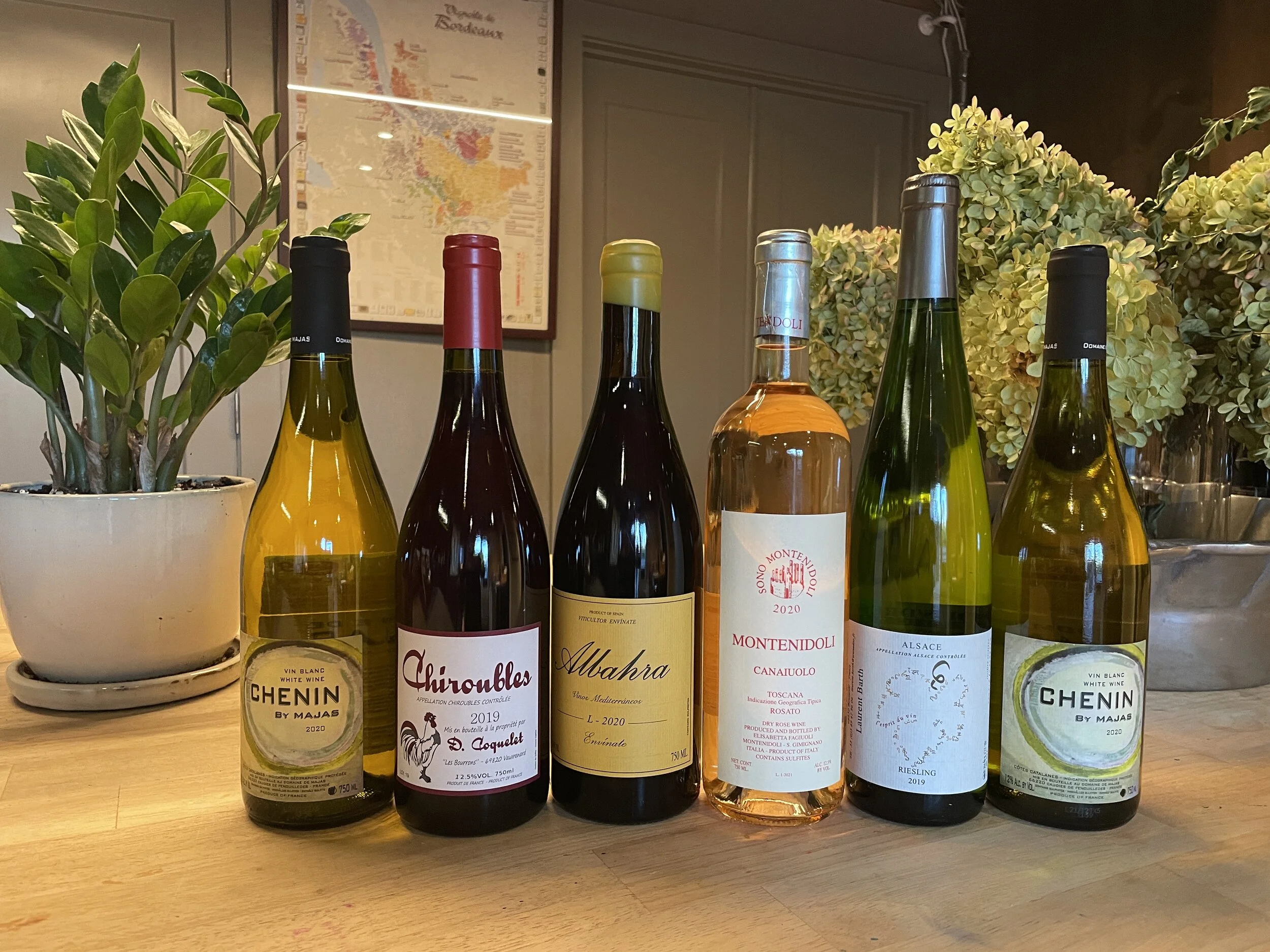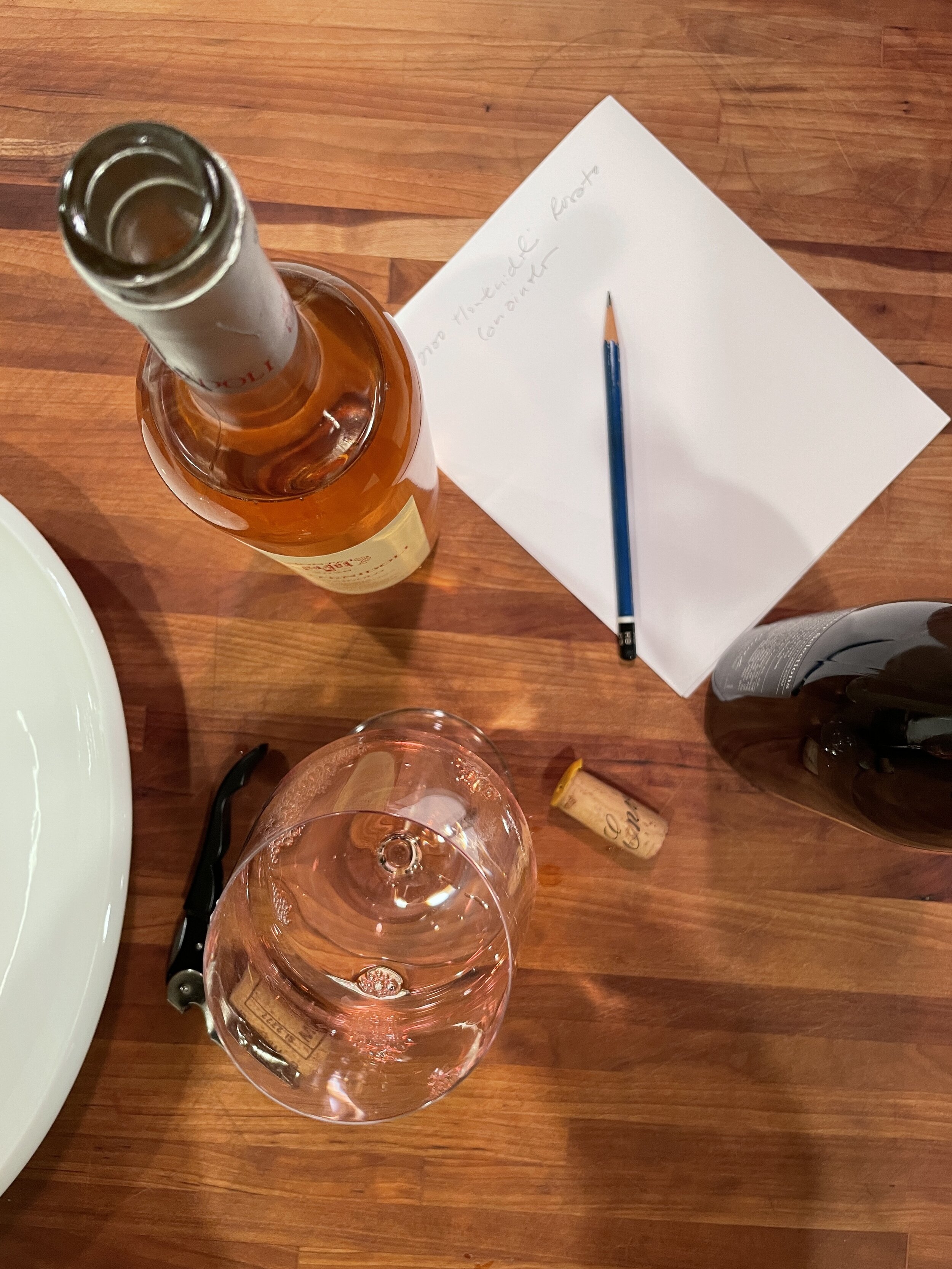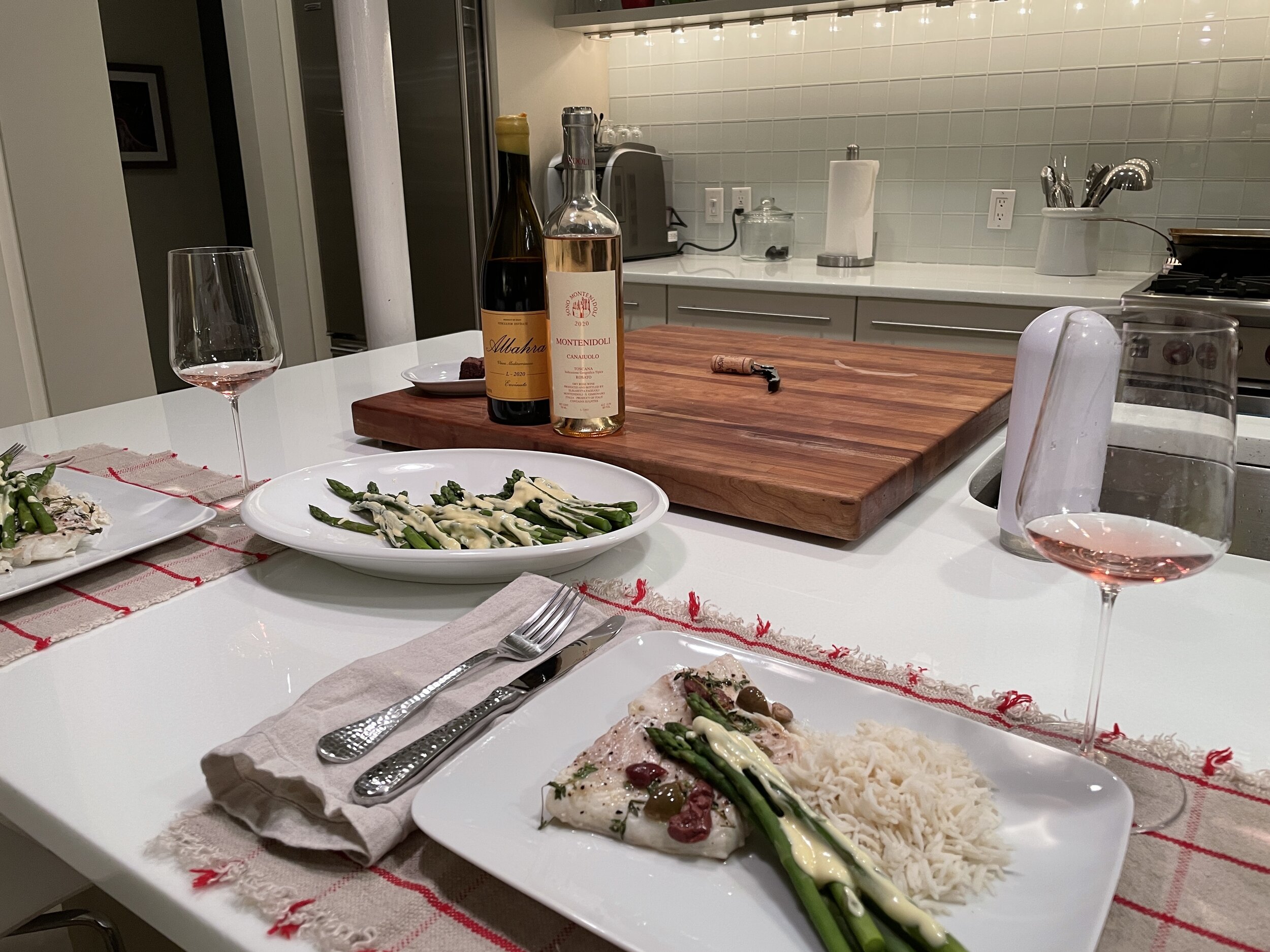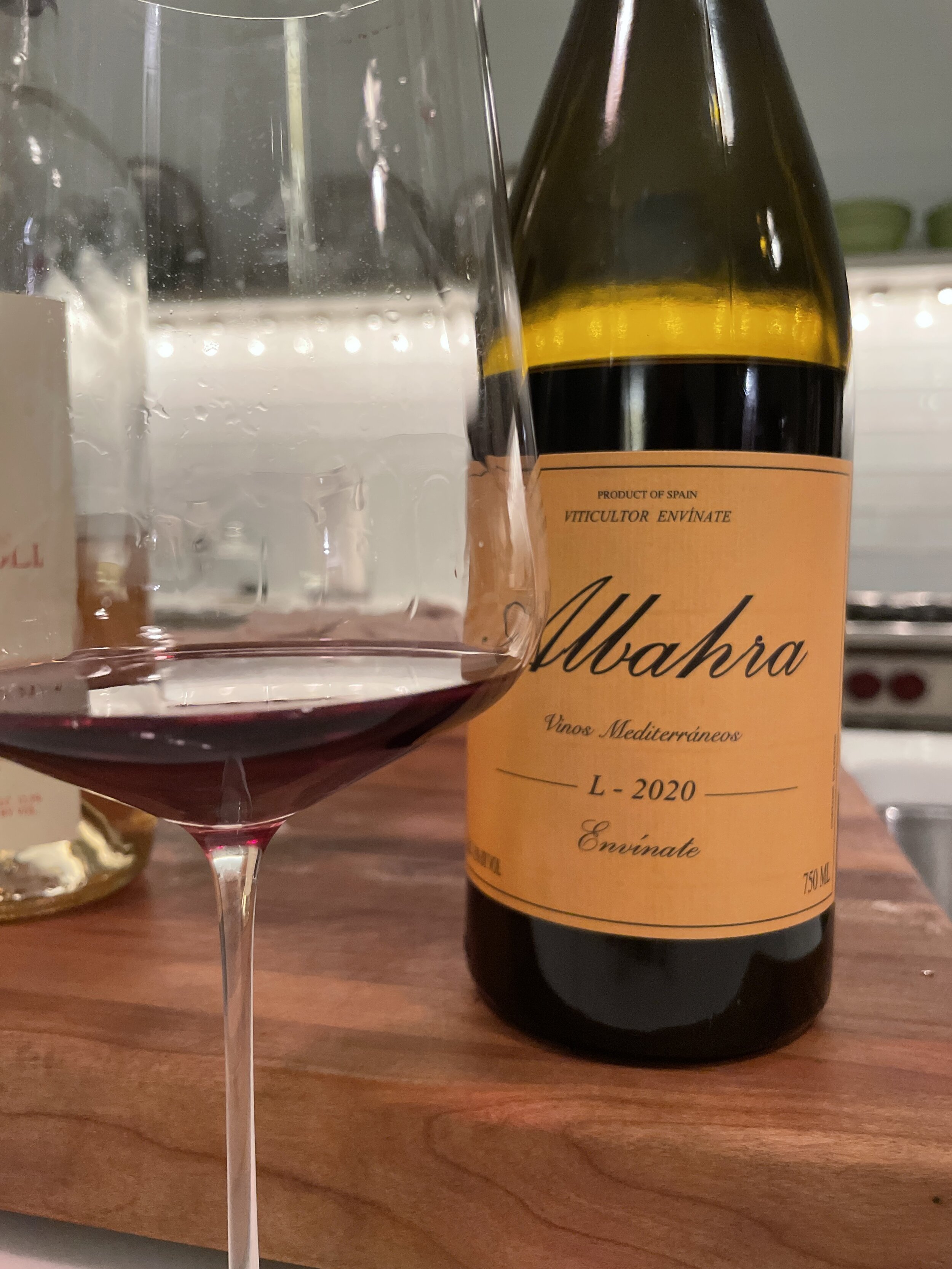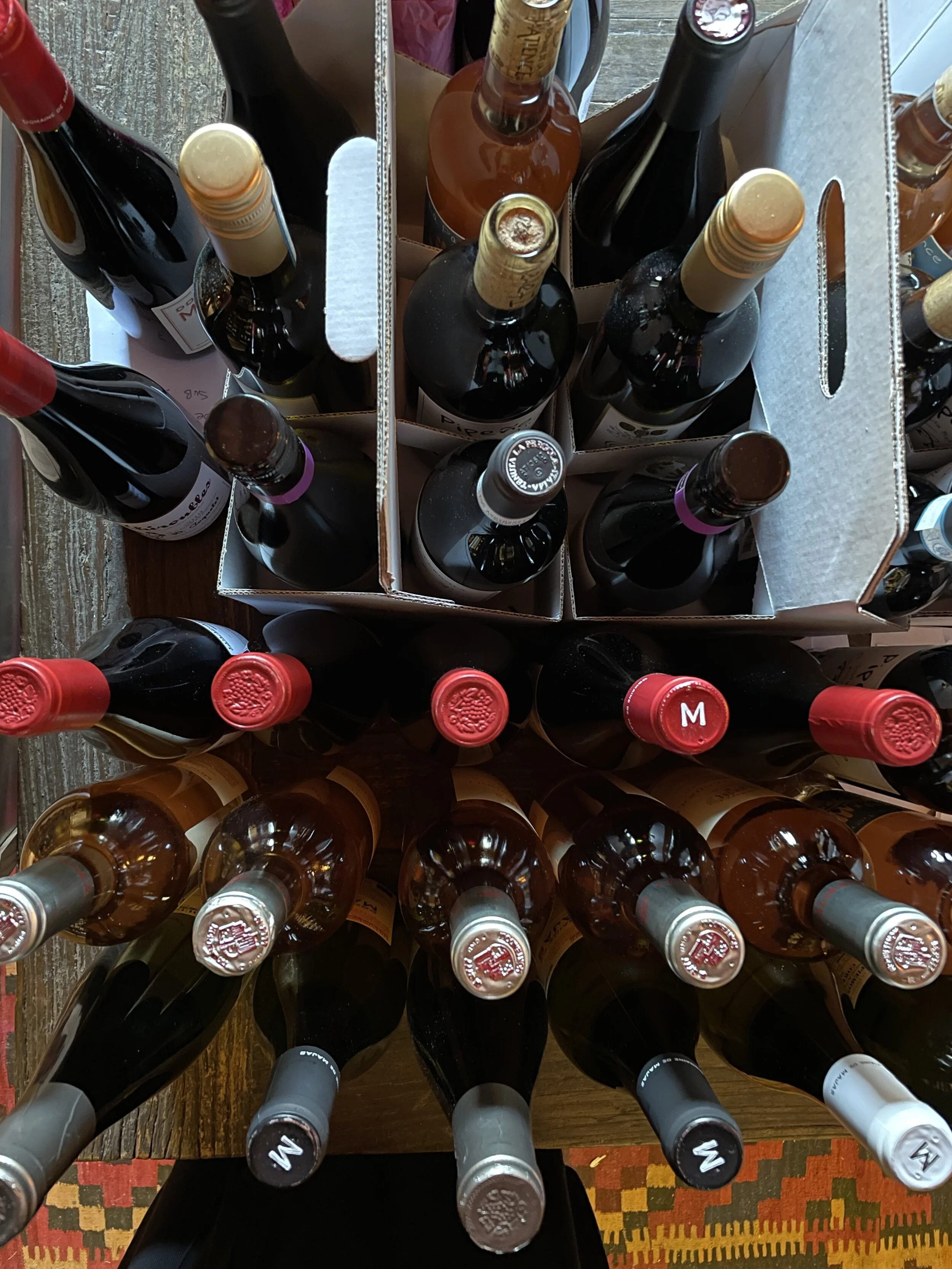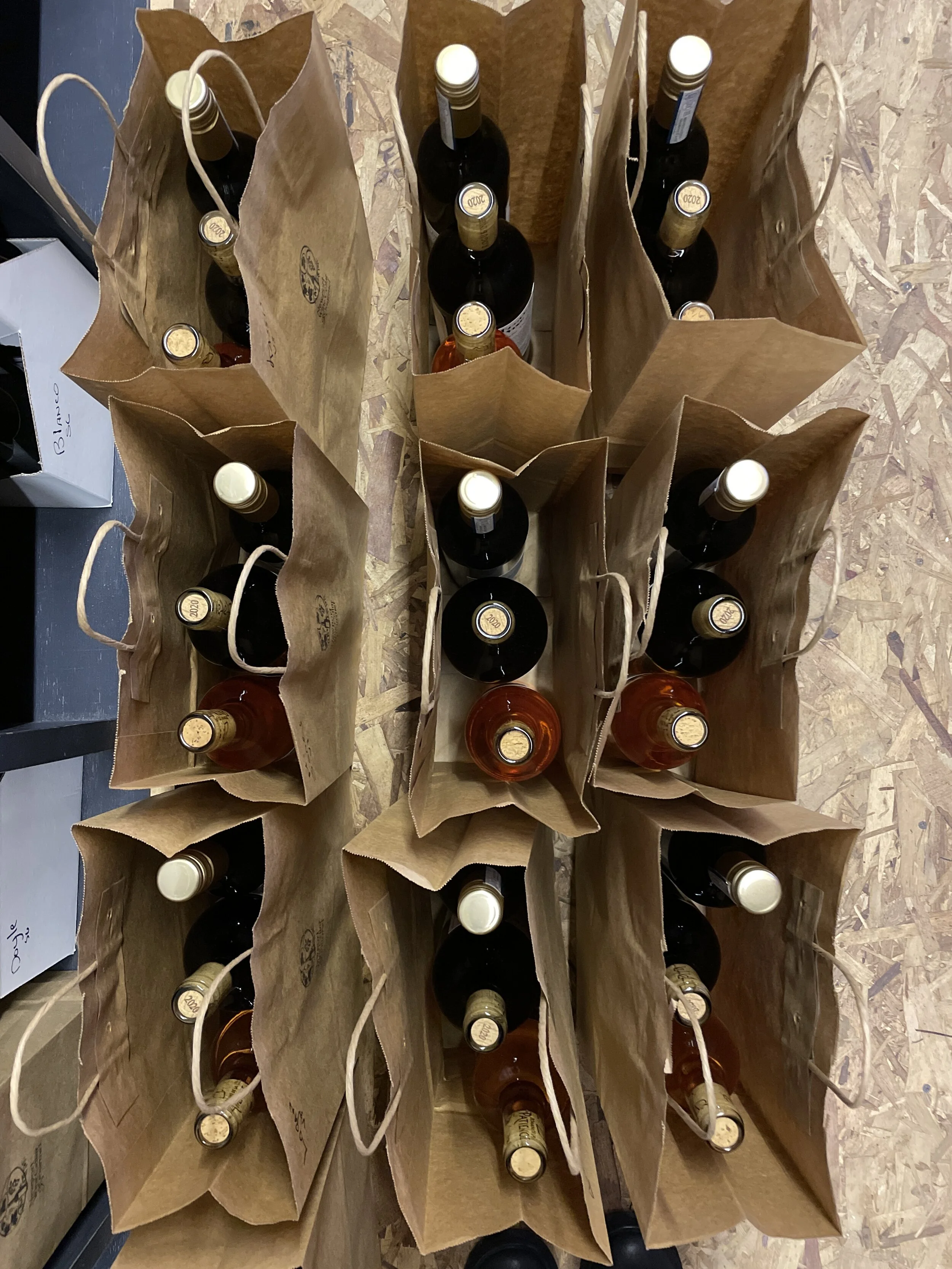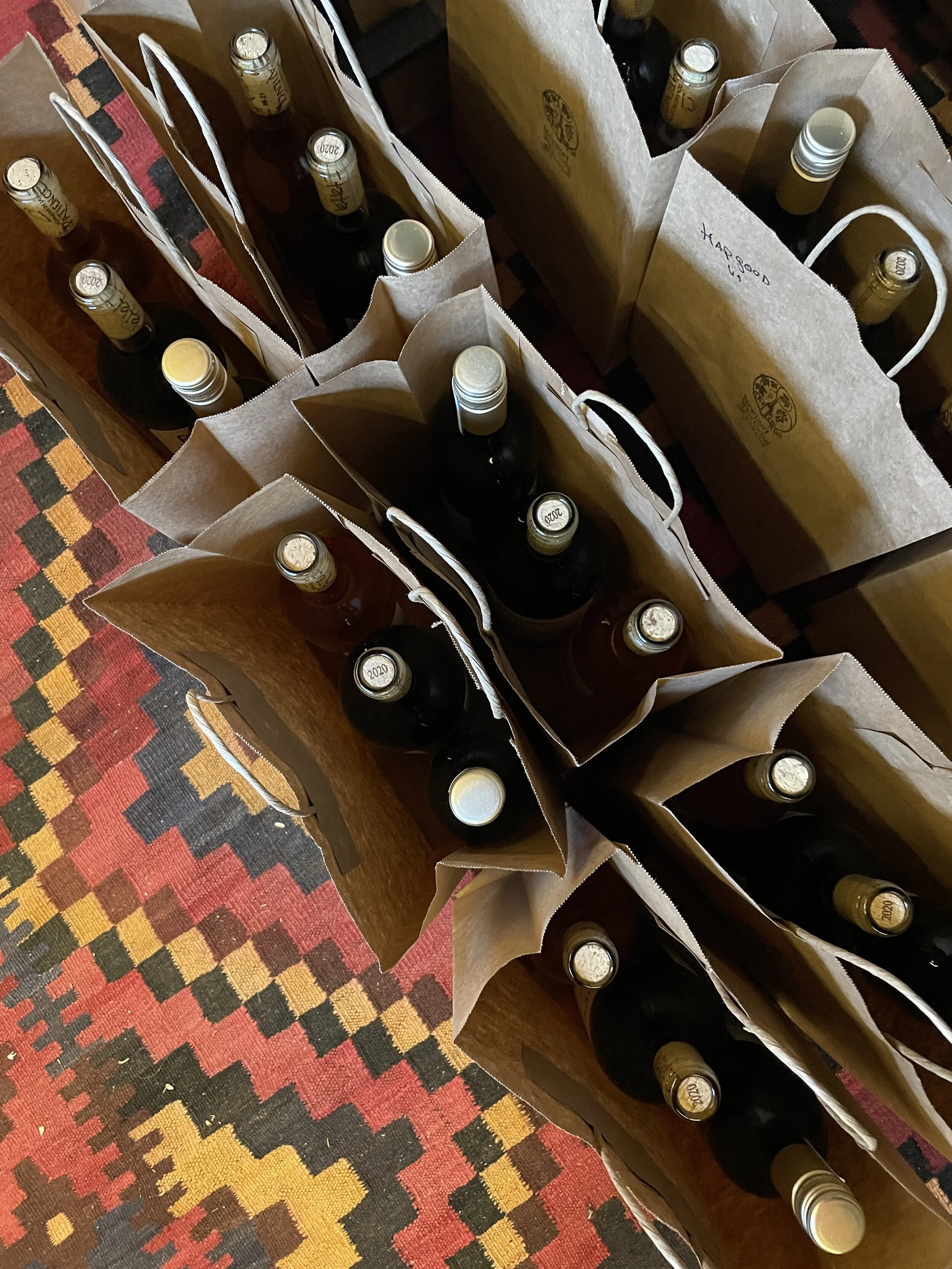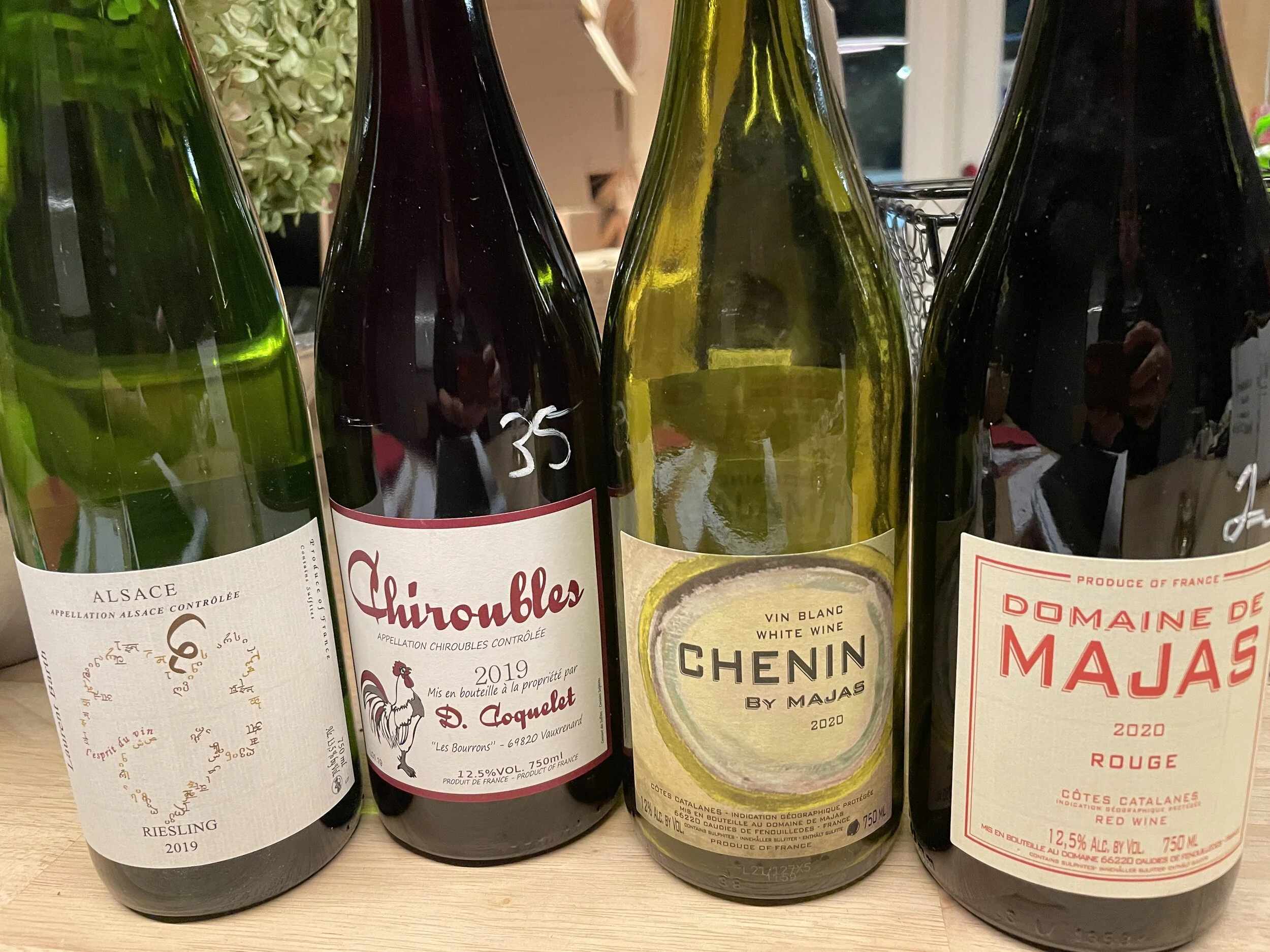Responsible Indulgence--October's Wine Notes
Indulgence—NWCG Wine Club
October Wine Notes
Tricks & Treats!
Fall has officially arrived, and it comes with a certain aroma in the air that makes me think about food a lot more often. In fairness, I always want to eat, but the air of autumn has a savory quality that compels me to the eat the same. Summer’s salinity has developed into something deeper, more rich, more umami. The leaves are beginning to fall and scrape against the pavement, my sweater today is wool, and I am braising short rib and making risotto Milanese for supper with friends. My wine choices reflect that change in season for October, and I hope you are ready for some powerful flavors.
Additionally, this month, I had fun picking from some even more hard to find items, so you guys are in for a treat that are not going to be available on the shelves. Enjoy them. They will be back, but not for a while. This is your reward for being club members, and I, as always, I thank you for your support!
To begin with, the Super Value 3 pack has three very interesting wines for you to enjoy. The 2020 Rogue Pipeno Red is a winery that you have seen before, but this new vintage of the Rogue Red will bring you warmth. It is a blend of Cinsault, Pais, and Carignan and the grapes come together through a very simple process with as little manipulation as possible to create a juicy and earthy light bodied red that can handle anything from cheeses to braised meats. If it is a cold bottle that you seek, the 2019 Fratelli Cortese and 2020 La Patience Vin Rosé both offer an opportunity to refresh after you are done raking the leaves! I picked both of these because of the texture and weight of the wine. In the fall, I want my wines to be weightier, and these provide a more-full mouth feel and a richer textural experience. The rose, Grenache and Cinsault, has terrific aromatics that will elevate your meal. Try it with something spicey, like a bean chili or Moroccan stew. The Cortese from the Piedmont is likely the lightest of the 3 wines. It is fresh and crisp, so use it as an aperitif, sip on it while you cook with some nibbling parmesan.
For the remaining Value wines, I went with 3 reds, because we have the seasonal change, but more because so many of you have requested that! All three of them have a style consistent with our fall flavors—increased savory. I am ready to roast some butternut squash, make my beet risotto, and am thinking about Borden Farms apples roasted with a pork loin! All of these fall dishes call for both fruit and earth, but with a savoriness that combines cooked fruit flavors and earthiness. Savory is not an easy idea to tease out, but think about foods that are slow cooked. Perhaps the flavor of the fall air is that of leaves that have been slowly roasted in the long summer sun. These wines were selected because I think they share that flavor. The 2019 Amano Imprint Primitivo is a new one for me that a colleague suggested I try. It is made by a couple who work lovingly with their hands to make a simple, delicious wine from Puglia that is both approachable and interesting. The 2020 Pergola Monferato Barbera is a juicy little number that will rock your world at this price point. She is a crowd pleaser, for certain. The 2019 Domaine Piquemal "Tradition," is a sumptuous blend of Syrah, Grenache, and Carignan that is hand crafted by Marie-Pierre Piquemal in the Cotes du Roussillon. Each of these wines are unique in their expression of terroirs, but all three share an intensity of autumnal flavors.
For the Select Level wines, continuing to pair with the decomposing leaves, I picked wines with richness of fruit and earth. To begin with, the 2020 Montenidoli Rosato, which is made entirely of Canaiulo, is a rich and generous rosé from Tuscany. The best tasting note I read, said “it does not whisper,” and I cannot resist including that in my notes. This is a serious pink that deserves food and will elevate your esteem of Italian rosé. It is fresh and light on the nose with impact on the palate, tart and racy on the finish with herbal notes. It is complex and wonderful.
The whites, a 2019 Barth Riesling and the 2020 Majas Chenin Blanc, both provide us with further examples of richer whites, but these two also offer a bit of a surprise. The Riesling comes from Laurent Barth in Alsace, in the small village of Bennwhir, north of Colmar, an area believed to be an ideally suited micro-climate for wines. Laurent’s wines are all elegant, delicate, but intense, with unique balance of fruit and soil characters and loads of minerality and bracing acidity to balance the fruit. The Riesling will make you appreciate why this grape is wonderful that you will question why you don’t drink it more often. The Chenin, which is particularly surprising because it is unusual to the region, has all the flavors associated with this grape—green apple, salt, apricot, quince, ginger, but the texture is lighter than I expected. It is delicate despite the heat of the southwest of France. Both wines would be wonderful as an accompaniment to a cheese and meat platter, where they would be the star. If I am cooking for these wines, I would go for brunch foods like quiche, roasted chicken, or spicy Asian foods like some green curry or pan-fried noodles.
For the reds, prepare to swoon, these three wines will whirl around your head and make you dizzy like a fall breeze picking up dried leaves and tossing them into the air against the heat of warm autumn sunshine. The 2019 D. Coquelet Chiroubles is the lightest of the three reds, no surprise coming from Beaujolais, but the intensity of this red is off the charts. This is a serious Gamay that would improve with a year in the bottle, but it is drinking nicely now. It has a lot of fresh, bright, tart red fruit on the nose and the palate, and this fruity character is balanced with equally intense acidity, giving a touch of a pucker up feel. The tartness is tempered by some fat, so grab a piece of taleggio with this one! The 2020 Majas Rouge, a blend of Grenache and Carignan, made from 20 to 120 year old vines on a family vineyard that Alain and his wife took over in the early nineties. They were initially preoccupied with a project that seemed to good to be true—a big supermarket offered to buy their entire stock! As with much that seems to good to be true, it was just that. The market forced them to make industrialized style wines, wines without character. As Alain, explains, they had no soul. "There was no reflection of terroir, the wines had zero personality. They were okay, but could have been coming from anywhere." Once the contract had been completed, the couple made the difficult but necessary changes to fix that. Their wines reflect the character of place, while they delight with flavors of cherries and berries stewed with herbs, a nice dose of minerality on the finish and some soft ripe tannins to top it off.
The Majas red would be ideally suited for a coq au vin, if you felt like diving into a meal that takes a little time. It is deceptively simple, just takes a little planning. I love this dish, and have found Anthony Bourdain’s recipe useful as a guide. Don’t follow any recipe if it restrains you, but should you need a guide, this is a good one, and it follows the wine notes. In true Bourdain style, I suggest that you open the 2020 Envinate Albahra , once you have polished off the Majas. This is a new one me, and my palate was excited by this one with its complexity and intensity despite its surprising delicate body. Sticking with those lighter red fruits and berries, as is my October theme, but this one has some spice that sets it apart.
Don’t let that wax deter you, just drive the corkscrew straight through the wax and pull out the cork as you always would. Don’t try to fuss with removing the wax first, you just get a mess. Trust me, it works. Open it while you drink the Majas, just to give it a little time to breathe.
For the Collector’s selections, I went to Northern Italy. Perhaps it was the braised short rib and risotto Milanese that was on my brain when I started making these choices. These are both remarkable wines of character and style that I selected because of their intensity of fruit and savory qualities. The 2015 Monte Dall'Ora Valpolicella is the lighter of the two, but only by a very small margin. This bottling is the first vintage from this special 1.5 hectare site several miles from the estate, 500 meters on the high hills closest to Lake Garda, surrounded by forest and wild growth. This rugged terrain made its imprint on this wine, giving it a fierceness and intensity. It is a Corvina blend with the character of an Amarone in more delicate presentation.
The 2018 Le Piane Maggiorina Colline Novaresi, a field blend of Nebbiolo, Crotina and Vespolina has thos same components of flavor that I have been returning to throughout—cherry, berry, earth, and spice. It is distinguished in one way simply by its truly Northern Italian, more specifically Piedmontes character. The wine celebrates the Colline Novaresi DOC with its unique soil of volcanic origin and fine gravel surface within a microclimate of the Lower Alps that characterize high autumn temps, intense sunshine, and cold alpine winds. That terroir combined with a commitment to follow Antonio Cerri’s traditional and simple techniques allows Christoph Kunzli and Aleander Tolf to make wine of exceptional character and finesse. Let this one age 5 years and you will truly be rewarded. Or better yet, try one now, and order a few to cellar!
Happy sipping, reading, and snacking,
Cheers, Maria
Bourdain’s Coq au Vin, from Les Halles Cookbook (get a copy now!)
© Anthony Bourdain, 2004, Anthony Bourdain’s Les Halles Cookbook: Strategies, Recipes, and Techniques of Classic Bistro Cooking, Bloomsbury Publishing Inc.
Coq au vin is another easy dish that looks like it’s hard. It’s not. In fact, this is the kind of dish you might enjoy spending a leisurely afternoon with. There are plenty of opportunities for breaks. It’s durable, delicious, and the perfect illustration of the principles of turning something big and tough and unlovely into something truly wonderful. I know it looks like a lot of ingredients, and that the recipe might be complicated. Just take your time. Knock out your prep one thing at a time, slowly building your mise en place. Listen to some music while you do it. There’s an open bottle of wine left from the recipe, so have a glass now and again. Just clean up after yourself as you go, so your kitchen doesn’t look like a disaster area when you start the actual cooking.
You should, with any luck, reach a Zen-like state of pleasurable calm. And like the very best dishes, coq au vin is one of those that goes on the stove looking, smelling, and tasting pretty nasty, and yet later, through the mysterious, alchemical processes of time and heat, turns into something magical.
Photo by ZPZ Production.
Ingredients:
1 bottle (1 liter) plus 1 cup of red wine
1 onion, diced
1 carrot, cut into ¼-inch slices
1 celery rib, cut into ½-inch slices
4 whole cloves
1 tbsp whole black peppercorns
1 bouquet garni (bundle of aromatic herbs)
1 whole chicken, about 3½ lb “trimmed”–meaning guts, wing tips, and neckbone removed
Salt and freshly ground pepper
2 tbsp olive oil
6 tbsp butter, softened
1 tbsp flour
¼ lb slab or country bacon, cut into small oblongs (lardons) about ¼ by 1 inch
½ Ib small, white button mushrooms, stems removed
12 pearl onions, peeled pinch of sugar
Preparation:
DAY ONE
The day before you even begin to cook, combine the bottle of red wine, the diced onion (that’s the big onion, not the pearl onions), sliced carrot, celery, cloves, peppercorns, and bouquet garni in a large, deep bowl. Add the chicken and submerge it in the liquid so that all of it is covered. Cover the bowl with plastic wrap and refrigerate overnight.
DAY TWO
Remove the chicken from the marinade and pat it dry. Put it aside. Strain the marinade through the fine strainer, reserving the liquids and solids separately. Season the chicken with salt and pepper inside and out. In a large Dutch oven, heat the oil and 2 tablespoons of the butter until almost smoking, and then sear the chicken, turning with the tongs to evenly brown the skin. Once browned, remove it from the pot and set it aside again. Add the reserved onions, celery, and carrot to the pot and cook over medium-high heat, stirring occasionally, until they are soft and golden brown. That should take you about 10 minutes.
Sprinkle the flour over the vegetables and mix well with the wooden spoon so that the vegetables are coated. Now stir in the reserved strained marinade. Put the chicken back in the pot, along with the bouquet garni. Cook this for about 1 hour and 15 minutes over low heat.
Have a drink. You’re almost there…
While your chicken stews slowly in the pot, cook the bacon lardons in a small sauté pan over medium heat until golden brown. Remove the bacon from the pan and drain it on paper towels, making sure to keep about 1 tablespoon of fat in the pan. Sauté the mushroom tops in the bacon fat until golden brown. Set them aside.
Now, in the small saucepan, combine the pearl onions, the pinch of sugar, a pinch of salt, and 2 tablespoons of the butter. Add just enough water to just cover the onions, then cover the pan with parchment paper trimmed to the same size as your pan. (I suppose you can use foil if you must.) Bring to a boil, reduce to a simmer, and cook until the water has evaporated. Keep a close eye on it. Remove the paper cover and continue to cook until the onions are golden brown. Set the onions aside and add the remaining cup of red wine to the hot pan, scraping up all the bits on the bottom of the pot. Season with salt and pepper and reduce over medium-high heat until thick enough to coat the back of the spoon.
Your work is pretty much done here. One more thing and then it’s wine and kudos …
When the chicken is cooked through—meaning tender, the juice from the thigh running clear when pricked—carefully remove from the liquid, cut into quarters, and arrange on the deep serving platter. Strain the cooking liquid (again) into the reduced red wine. Now just add the bacon, mushrooms, and pearl onions, adjust the seasoning with salt and pepper, and swirl in the remaining 2 tablespoons of butter. Now pour that sauce over the chicken and dazzle your friends with your brilliance. Serve with buttered noodles and a Bourgogne Rouge.
If you are a bold adventurer, and live near a live-poultry market or friendly pork butcher, you might want to play around a bit after doing this recipe a few times. By cutting back on the flour and thickening with fresh pig or chicken blood, you will add a whole new dimension to the dish. Be warned, though: add the blood slowly. It doesn’t take much to make the sauce sit up like a rock. (Blood freezes nicely, by the way, so you might consider keeping a stash in small, individual packets. You never know when you’ll need it.)

